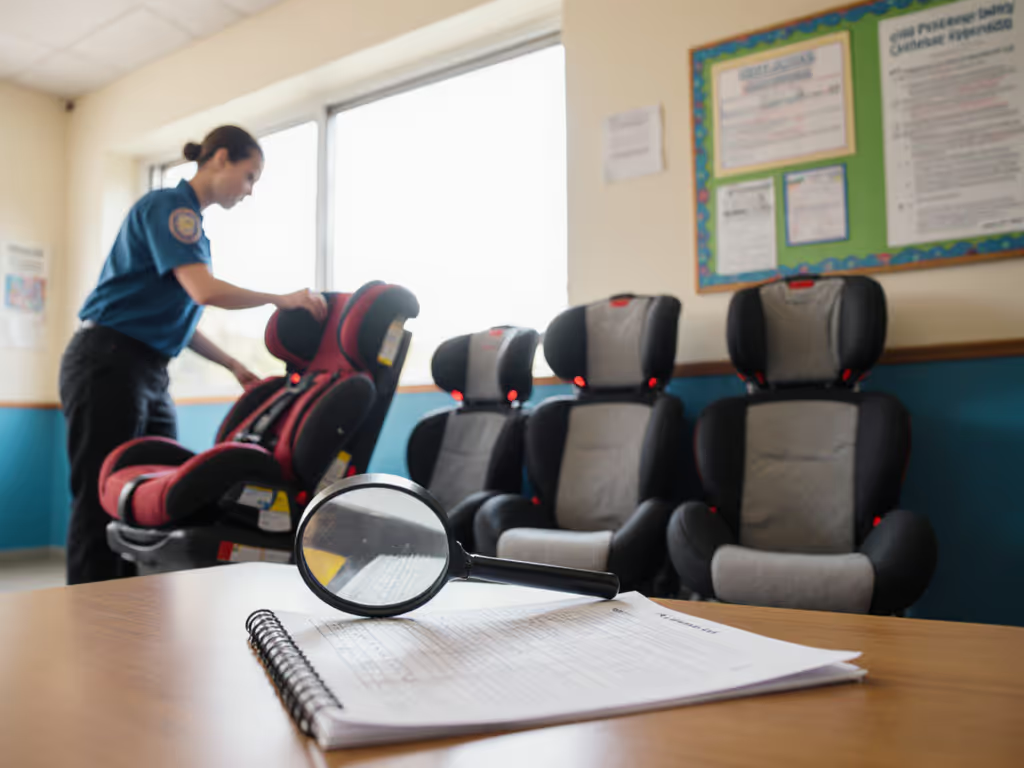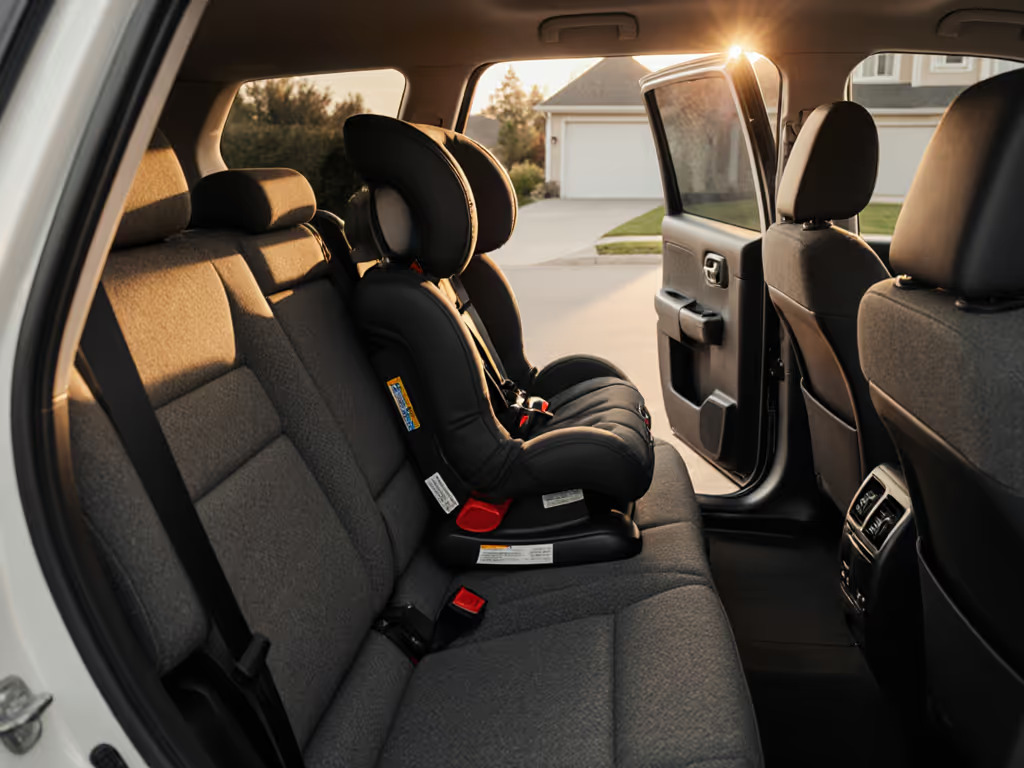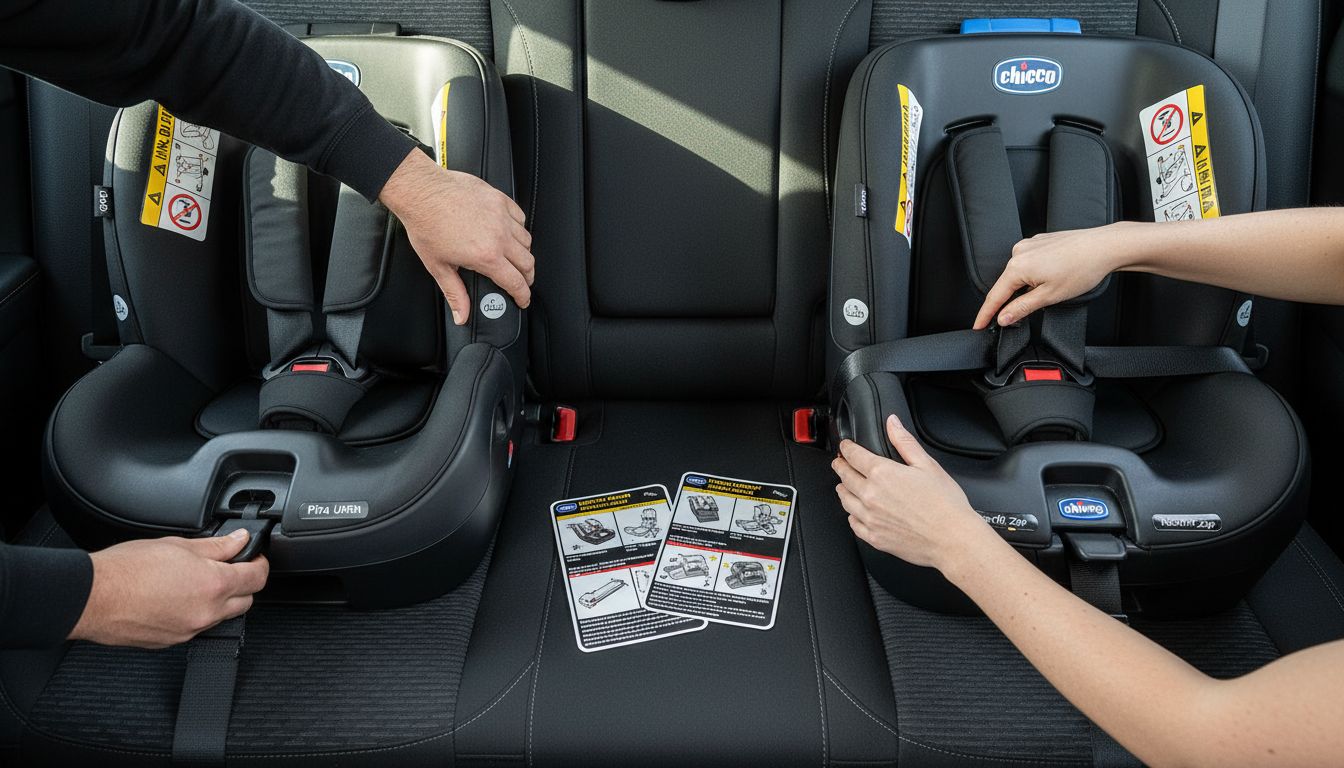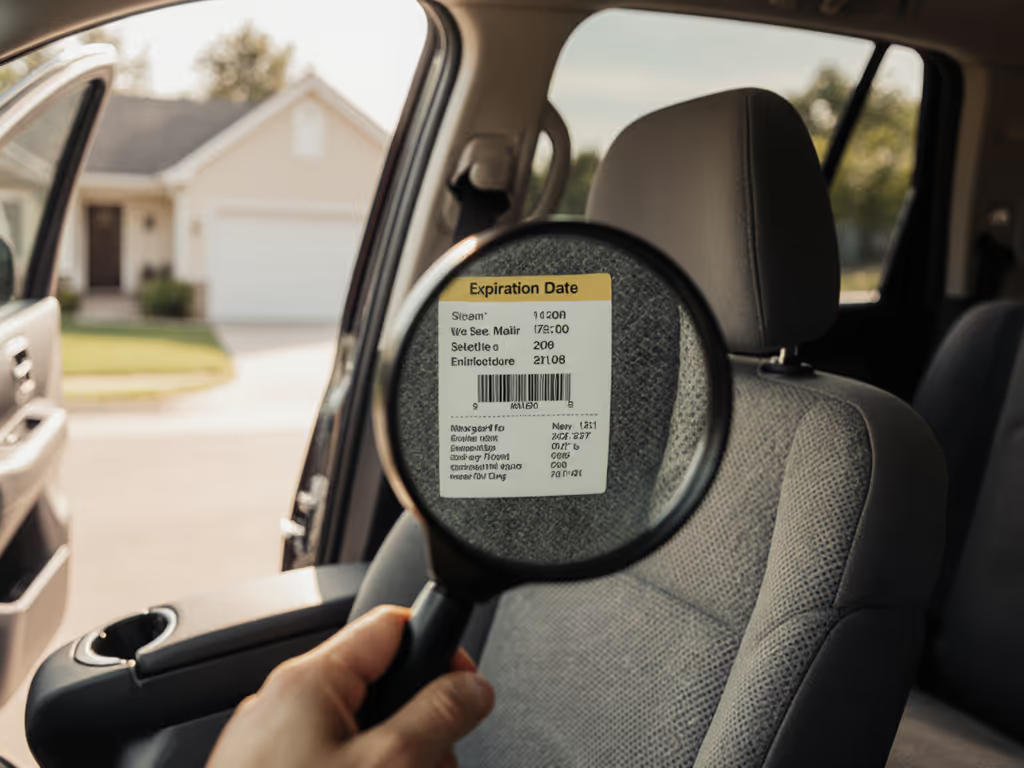
Complete Guide to Multiple Car Seat Installation

Over 40 percent of parents install multiple car seats incorrectly, making every ride riskier for young passengers. When you have more than one child to secure, the car turns into a puzzle of seats, straps, and safety rules. Choosing the right setup can be confusing, but understanding the basics of multiple car seat installation can mean the difference between worry and true peace of mind.
Key Takeaways
| Point | Details |
|---|---|
| Child Safety Essentials | Proper car seat installation is crucial for child passenger safety, requiring awareness of vehicle configuration and individual car seat compatibility. |
| Car Seat Types and Stages | Understanding the various types of car seats—infant, convertible, forward-facing, booster, and all-in-one—is essential for selecting appropriate options based on a child's developmental stage. |
| Installation Challenges | Multiple car seat installations demand strategic planning for spacing, ensuring secure anchoring, and maintaining proper recline angles to enhance safety. |
| Common Mistakes to Avoid | Parents should be vigilant about typical installation errors, including incorrect seat angles and harness adjustments, to ensure effective protection for young passengers. |
Understanding Multiple Car Seat Installation Basics
Child passenger safety begins with understanding the fundamental principles of multiple car seat installation. Parents and caregivers must recognize that installing more than one car seat requires strategic planning, spatial awareness, and a deep commitment to protecting young passengers. Vehicle configuration, seat sizes, child ages, and compatibility become critical factors when navigating this complex safety challenge.
The National Highway Traffic Safety Administration (NHTSA) emphasizes that selecting appropriate car seats depends on three primary considerations: the child's age, weight, and height. When installing multiple car seats, these factors become even more nuanced. Parents must assess:

- Available vehicle seating configuration
- Individual car seat dimensions
- Weight and height restrictions for each seat
- Compatibility between different car seat models
- Vehicle seat belt and LATCH system configurations
Proper positioning matters dramatically. The American Academy of Pediatrics recommends prioritizing rear-facing installations for infants and young toddlers, which often requires more intricate planning when multiple seats are involved. Rear-facing seats typically occupy more space and have specific angle requirements, making strategic placement essential. Some key placement strategies include:
- Prioritize center seating for the youngest child
- Ensure each seat has secure, independent anchoring
- Maintain recommended recline angles for each seat
- Verify that seat installations do not interfere with each other
Successful multiple car seat installation transcends simple placement—it demands meticulous attention to detail, patience, and a commitment to ongoing safety assessment. Regular inspections, understanding manufacturer guidelines, and potentially consulting a certified child passenger safety technician can transform a potentially complicated process into a reliable safety strategy.
Types of Car Seats and Configurations
Navigating the world of car seat types requires understanding the complex landscape of child passenger safety. Each car seat configuration represents a critical stage in protecting children during vehicle travel, with specific design features tailored to different developmental phases. The Insurance Institute for Highway Safety (IIHS) provides comprehensive guidance on selecting the right seat based on a child's age, weight, and physical characteristics.
The primary car seat categories include:
- Rear-Facing Infant Seats: Designed for newborns and infants up to approximately 2-3 years old
- Convertible Car Seats: Adaptable seats that transition from rear-facing to forward-facing
- Forward-Facing Car Seats: Suitable for toddlers and young children with integrated harness systems
- Booster Seats: Designed for older children to properly position seat belts
- All-in-One Car Seats: Comprehensive seats that accommodate multiple growth stages
Each seat type presents unique installation challenges when multiple configurations are required. Size and weight variations significantly impact how these seats can be arranged within a vehicle. Parents must consider:
- Total width of each car seat model
- Compatibility with vehicle LATCH systems
- Individual seat weight limits
- Potential interference between adjacent seats
- Accessibility for buckling and unbuckling children
Advanced car seat configurations demand strategic thinking. Families with multiple young children often need to balance safety requirements with practical constraints.
This might involve selecting narrower seat models, utilizing different seating positions, or investing in vehicles with expanded rear-seat configurations. Consulting a certified child passenger safety technician can provide personalized guidance for complex multiple-seat installations, ensuring maximum protection for every young passenger.
Key Safety Standards and Compatibility Factors
Ensuring child passenger safety demands a comprehensive understanding of critical safety standards that govern car seat design, installation, and performance. These standards represent complex regulatory frameworks developed to protect children during vehicular transportation, involving rigorous testing and precise manufacturing specifications that go far beyond simple product design.
The most fundamental safety compliance factors include:
- Federal Motor Vehicle Safety Standard (FMVSS) 213: The primary regulatory requirement for child restraint systems
- Crash testing performance metrics
- Material durability and strength requirements
- Harness and restraint system design specifications
- Age and weight-based design parameters
Vehicle compatibility represents another crucial dimension of multiple car seat installation. Seat compatibility involves intricate interactions between car seat geometry, vehicle seat design, anchoring systems, and restraint mechanisms. Parents must evaluate several key compatibility factors:
- Vehicle LATCH (Lower Anchors and Tethers for Children) system configuration
- Seat belt geometry and attachment points
- Rear seat width and structural characteristics
- Potential interference between adjacent car seats
- Clearance requirements for different seat models
Successful multiple car seat installation requires a holistic approach that transcends individual component performance. Families must consider dynamic interactions between seat designs, vehicle architectures, and child anthropometric variations. This complexity underscores the importance of professional consultation, careful measurement, and ongoing safety assessment to create a comprehensive child passenger protection strategy.
Achieving Proper Fit in Various Vehicles
Installing multiple car seats requires more than simply placing them in a vehicle—it demands precise spatial engineering and a deep understanding of vehicle-specific characteristics. SaferCar.gov emphasizes that no two vehicles are identical, and each presents unique challenges for car seat installation. The geometry of rear seats, variations in seat belt configurations, and underlying structural differences can dramatically impact the safety and stability of car seat placement.
Critical considerations for achieving proper fit across different vehicle types include:
- Measuring actual usable seat width
- Identifying compatible anchor points
- Assessing seat belt geometry and tension mechanisms
- Understanding vehicle-specific LATCH system variations
- Evaluating seat cushion angle and depth
Vehicle type dramatically influences installation complexity. Compact cars, SUVs, sedans, and minivans each present distinct challenges. Narrow rear seats might restrict multiple car seat installations, while broader vehicles could offer more flexibility. Parents must carefully measure and test seat configurations, considering factors like:

- Total combined width of car seats
- Potential interference between seat bases
- Ability to achieve proper recline angles
- Accessibility for buckling and unbuckling children
- Maintaining clear sightlines for drivers
Successful multiple car seat installation transcends generic recommendations. Each vehicle-seat-child combination represents a unique safety puzzle. Consulting certified child passenger safety technicians, conducting thorough measurements, and performing multiple test fits can transform a potentially dangerous situation into a reliable protection strategy. Patience, precision, and willingness to experiment are key to ensuring optimal safety for young passengers across diverse vehicle environments.
Common Mistakes and How to Avoid Them
Multiple car seat installation introduces a complex landscape of potential safety pitfalls that can compromise child protection. The American Academy of Pediatrics warns that even well-intentioned parents can make critical errors that significantly reduce a car seat's effectiveness. Understanding these common mistakes becomes paramount in creating a secure transportation environment for young passengers.
Frequent installation errors parents must recognize include:
- Incorrect seat angle, particularly for rear-facing seats
- Loose harness straps that compromise restraint effectiveness
- Improper positioning of seat belt or LATCH system attachments
- Mixing different car seat brands without verifying compatibility
- Failing to account for vehicle-specific installation requirements
- Neglecting weight and height limitations for specific seat models
- Overlooking regular maintenance and condition checks
Harness and restraint system mistakes represent some of the most dangerous installation errors. Parents often struggle with achieving the correct tension and positioning, which can dramatically impact a child's safety during potential accidents. Critical harness adjustment considerations include:
- Ensuring straps lie flat without twists
- Checking that harness sits at or below shoulder level for rear-facing seats
- Verifying minimal slack in the harness system
- Confirming that chest clips are positioned at armpit level
- Removing bulky clothing that can interfere with proper harness fit
Mitigating installation risks requires a proactive, methodical approach. Regular consultations with certified child passenger safety technicians, thorough reading of both vehicle and car seat manufacturer guidelines, and consistent practice can transform potential mistakes into reliable safety protocols. Parents should view car seat installation as an ongoing learning process, always remaining open to refinement and professional guidance to protect their most precious passengers.
Simplify Multiple Car Seat Installation for Your Family's Safety
Installing multiple car seats can feel overwhelming with all the measurements, safety standards, and vehicle compatibility details involved. This article highlighted critical challenges like achieving proper fit, maintaining correct harness tension, and navigating complex vehicle seating configurations. If you want to protect your children without the stress and confusion, specialized guidance can make all the difference.
At Fits for Years Seats, we understand how important it is to customize your car seat selections based on your child's growth, your vehicle type, and safety compliance like FMVSS 213 standards. Our comprehensive resources include in-depth product comparisons, expert reviews, and practical tips focused specifically on multiple car seat setups. Don't risk mistakes that could compromise safety. Explore our carefully researched recommendations today and gain confidence in your car seat choices and installation methods. Visit Fits for Years Seats to get started with personalized advice that keeps your little ones secure on every ride.
Frequently Asked Questions
What factors should I consider when installing multiple car seats?
When installing multiple car seats, consider the vehicle's seating configuration, the dimensions and weight restrictions of each car seat, compatibility between different car seat models, and the LATCH system configurations in your vehicle.
How do I ensure each car seat is installed securely?
Make sure each seat has independent anchoring, maintains recommended recline angles, and does not interfere with adjacent seats. Regularly inspect the installations and consult a certified child passenger safety technician for guidance.
What are the proper positioning strategies for multiple car seats?
Prioritize the center seating for the youngest child, ensure secure anchoring for all seats, maintain the recommended recline angles, and check for any interference between the installed seats.
What are the common mistakes to avoid when installing multiple car seats?
Be aware of incorrect seat angles, loose harness straps, improper seat belt or LATCH system positioning, mixing different brands without verifying compatibility, and neglecting weight and height limitations of the seats.




